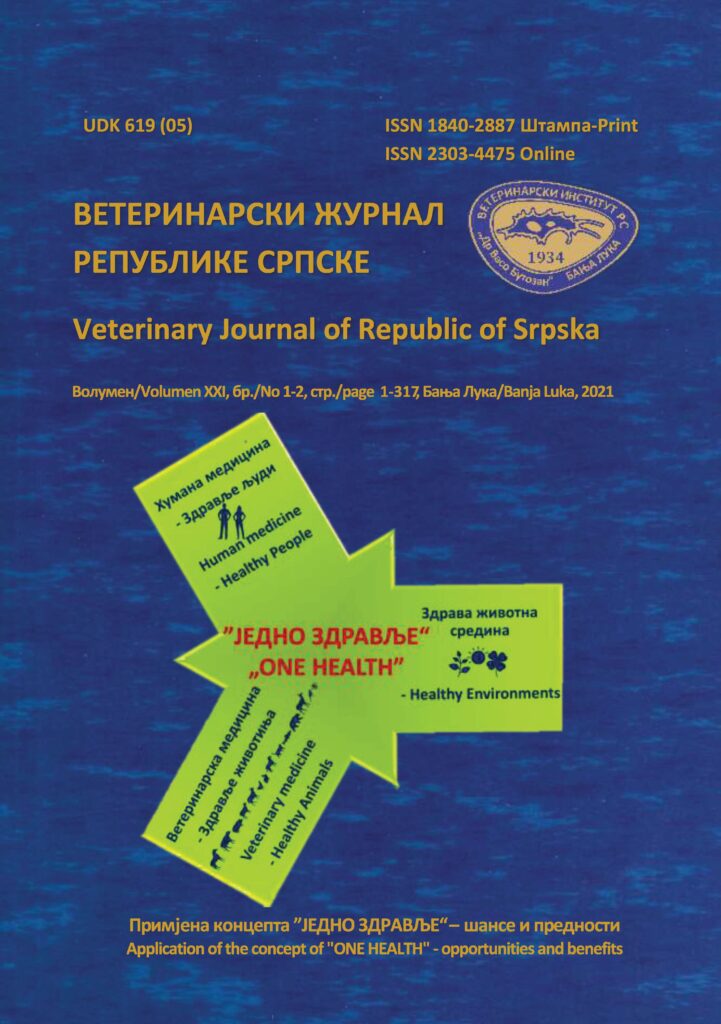EPIZOOTIOLOGICAL CHARACTERISTICS OF CORONAVIRUS INFECTIONS
DOI:
https://doi.org/10.7251/VETJEN2101005VAbstract
Due to the modern way of life, the global exchange of goods, more frequent contacts, and the closer life with pets, domestic and exotic animal species, different species are also more often exposed to various coronaviruses (CoVs). Most CoVs are species-specific and are not transmitted between different species. Many CoVs have been found to spread very rapidly after introduction into the susceptible population and have remained endemic despite vaccination attempts and other measures to prevent their spread. The majority of animal CoV are present in susceptible population and can cause from mild to a severe clinical picture of the disease, including high mortality. Very rarely strains of animal CoVs are transmitted to humans and then spread rapidly among humans like severe acute respiratory syndrome CoV-2 (SARS CoV-2). The epizootiological characteristics of coronavirus infections are a consequence of their unique characteristics that can be classified into three basic epizootiological determinants. First of all, the virus itself has its own characteristics in terms of genetic characteristics and sustainability in the environment. In relation to the second epizootiological determinant, the macro-organism, it is necessary to emphasize that coronaviruses, more often than other families of viruses, adapt to primary species o even to a new species of animal in nature. This, so-called "jumping" the species barriers, is primarily conditioned by the biology of the virus, which often changes the antigenic composition and thus not only avoids the host's immune response but also finds new species in nature for its maintenance. For thousands of years, the environment greatly contributes to the fact that coronaviruses are a companion of populations of many animal species since there are certain characteristics of the environment (third epizootiological determinant) as sharing the same ecological niche by different species of animals (and humans).

